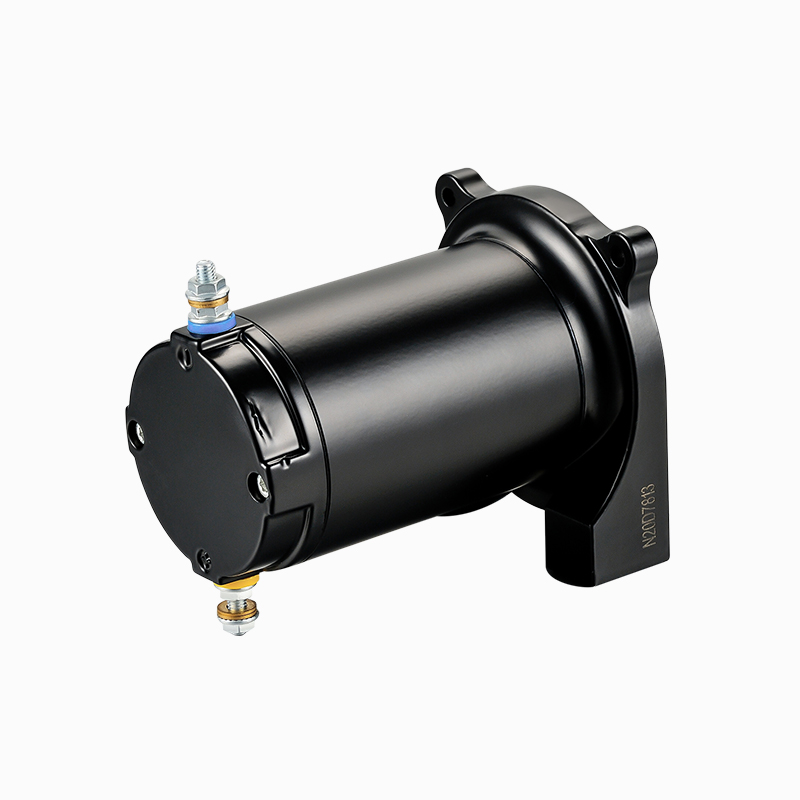Call us
+86-18023576732
+86-0579-89008006
Fax: +86-0579-82206899
Fundamentals of Speed Control in Permanent Magnet DC Motors
The Permanent Magnet DC Motor inherently offers good
speed control capabilities due to its straightforward construction and operational principle. Speed in these motors is primarily controlled by adjusting the voltage applied to the armature or by varying the current in the field winding. Since the magnetic field is generated by permanent magnets, which remain constant, speed regulation depends largely on armature voltage control. This direct relationship allows for smooth and precise speed adjustments over a wide range, making the motor highly responsive to control inputs.

Advantages Over Other Motor Types in Speed Regulation
Compared to traditional brushed DC motors with field windings or induction motors, Permanent Magnet DC Motors provide good speed control performance. The elimination of field current variation simplifies the control system and enhances the stability of speed settings. Additionally, the motor exhibits a linear speed-torque characteristic, which means that speed changes are predictable and easy to manage. This characteristic is highly desirable in applications that require accurate and stable speed control, such as robotics, conveyors, and precision machinery.
Control Methods and Technologies
Modern control techniques, including pulse-width modulation (PWM) and closed-loop feedback systems, enhance the speed control of Permanent Magnet DC Motors. PWM allows fine adjustment of the average voltage supplied to the motor, enabling efficient speed variation without significant power loss. When combined with sensors like encoders or tachometers in a feedback loop, the motor can maintain a set speed precisely despite load variations. This combination makes Permanent Magnet DC Motors ideal for applications demanding high dynamic response and tight speed regulation.
Wide Speed Range and Torque Stability
Permanent Magnet DC Motors can operate efficiently over a broad speed range, from very low to high RPMs, without losing torque stability. The constant magnetic field from the permanent magnets ensures that torque remains relatively steady as speed varies. This contrasts with some other motor types where torque drops off sharply at low or high speeds. Consequently, these motors provide reliable performance for variable-speed drives, improving process control and energy efficiency in numerous industrial and commercial settings.
Impact of Motor Design on Speed Control
The quality of speed control also depends on the specific design and construction of the Permanent Magnet DC Motor. Factors such as magnet type, winding configuration, and overall motor geometry influence response time, inertia, and controllability. High-performance magnets with strong magnetic fields allow for quicker acceleration and deceleration. Similarly, low rotor inertia helps the motor respond rapidly to speed changes. Manufacturers often tailor motor designs to optimize speed control for particular applications, balancing power, size, and control precision.
Applications Benefiting from Good Speed Control
Due to their precise speed control capabilities, Permanent Magnet DC Motors are widely used in robotics, CNC machines, electric vehicles, and medical devices. These fields require motors that can rapidly adjust speed while maintaining smooth operation and accurate positioning. The motors’ ability to hold steady speeds under varying loads also makes them ideal for conveyor systems, pumps, and fans where consistent performance is critical.
Conclusion: Reliable and Precise Speed Control Solution
In conclusion, the Permanent Magnet DC Motor possesses good speed control characteristics, enabled by its constant magnetic field and straightforward voltage-based regulation. When combined with modern control electronics, it delivers precise, efficient, and stable speed adjustment across a wide range of applications. This makes it a preferred choice where dynamic and accurate motor speed management is required without complex control mechanisms.
Contact Us